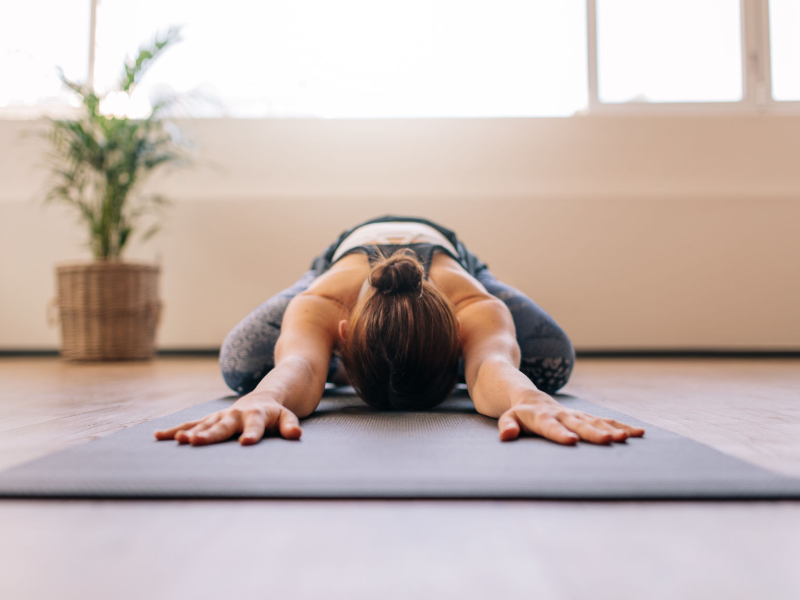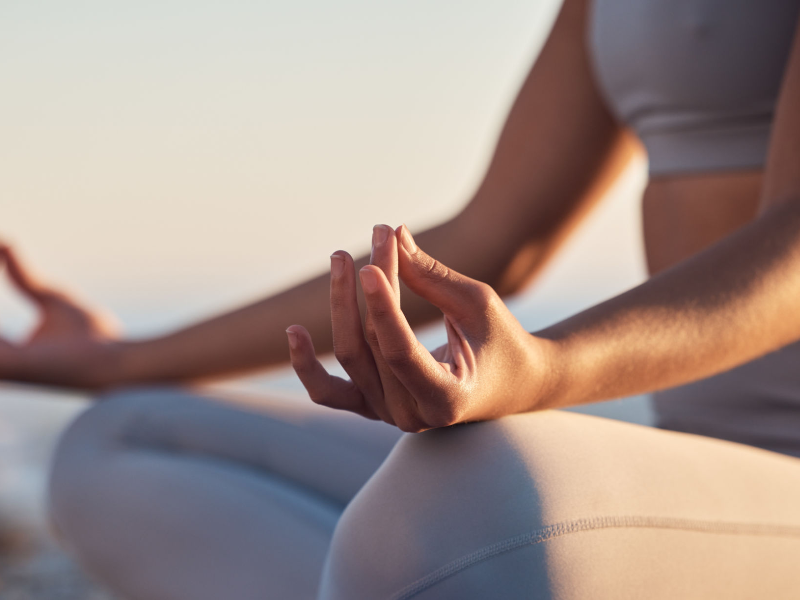Hormonal health is a cornerstone of overall well-being for women. However, it is often overlooked until symptoms like fatigue, mood swings, or weight gain appear. Hormones regulate everything from metabolism and energy levels to mood and reproductive health. Fortunately, exercise can be a powerful tool to maintain and restore balance. In this comprehensive guide, we’ll explore the best exercises to balance hormones in women, highlighting their benefits at every stage of life.
For more insights into women’s health, don’t miss our article on Hormonal Weight Gain: Natural Ways to Restore Balance.
How Hormones Impact Women’s Health
Hormones such as estrogen, progesterone, cortisol, and insulin orchestrate countless functions in the body. When these hormones are balanced, they work harmoniously to keep you feeling your best. Nevertheless, stress, lifestyle choices, and life stages such as puberty, pregnancy, and menopause can disrupt this balance.
Common symptoms of hormonal imbalance in women include:
- Unexplained weight gain or loss
- Irregular menstrual cycles
- Sleep disturbances
- Persistent fatigue
- Mood swings or depression
- Low libido
- Hair thinning or hair loss
To address these imbalances, lifestyle changes are often recommended. Among these changes, exercise is one of the most effective strategies. Moreover, proper nutrition and stress management complement physical activity. Thus, incorporating the best exercises to balance hormones in women can alleviate these symptoms and improve long-term health.
If you’d like to learn more about hormones and their roles, visit Hormone Health Network.

Exercises That Balance Hormones in Women
Exercise has a profound influence on the endocrine system, which is the network of glands responsible for producing hormones. Specifically, exercise affects hormones in the following ways:
- Regulating Cortisol: Physical activity, especially low-intensity exercises like yoga, helps lower cortisol levels. Consequently, it reduces stress and improves mood.
- Boosting Endorphins: Regular exercise releases endorphins, the “feel-good” hormones. As a result, it helps combat anxiety and depression.
- Improving Insulin Sensitivity: Strength training and cardio enhance your body’s ability to use insulin effectively. Consequently, blood sugar levels are regulated more efficiently.
- Balancing Estrogen: Exercise assists in metabolizing excess estrogen, which may reduce the risk of conditions like breast cancer and PCOS.
By incorporating the best exercises to balance hormones in women, you can take control of your health and feel your best. Furthermore, regular exercise can improve mental clarity and energy levels, which are essential for busy lifestyles.
If you want to understand how exercise benefits mental health, check out the American Psychological Association.
Benefits of Hormone-Balancing Workouts
1. Strength Training for Hormonal Balance
Strength training is a cornerstone of hormonal health. Not only does it build lean muscle, but it also increases metabolism and reduces body fat, which can affect hormone production. Additionally, it improves insulin sensitivity, helping to manage blood sugar levels.
If you want to know more about maintaining energy through life, read Vitality Tips for Women: Simple Steps for a Healthier Life.
Benefits of strength training for hormonal balance:
- Reduces body fat, which can store excess estrogen
- Increases testosterone production, promoting muscle growth and energy
- Improves bone density, which is crucial during menopause
Recommended strength training exercises:
- Squats
- Deadlifts
- Push-ups
- Resistance band exercises
- Weightlifting
For best results, aim for 2–3 strength training sessions per week. Moreover, start with lighter weights and gradually increase resistance as your strength improves. If done consistently, these exercises can help regulate your hormones effectively.
2. Cardio to Balance Hormones
Cardio exercises are excellent for heart health, weight management, and reducing cortisol levels. In addition, they help release endorphins, improving mood and overall well-being. Furthermore, cardio can enhance sleep quality, which plays a vital role in hormonal health.
Benefits of cardio for hormonal balance:

- Supports cardiovascular health
- Reduces cortisol levels
- Improves sleep quality
Benefits of cardio for hormonal balance:
- Supports cardiovascular health
- Reduces cortisol levels
- Improves sleep quality
Recommended cardio activities:
- Brisk walking
- Running
- Swimming
- Cycling
Even 30 minutes of moderate-intensity cardio five days a week can make a significant difference. For women who are new to exercise, walking is a gentle yet effective way to start. Additionally, it’s an excellent option for women of all fitness levels.
To explore more benefits of cardio exercises, visit Heart.org.
3. HIIT for Better Hormone Health
HIIT workouts are short, intense, and incredibly effective at burning fat and improving insulin sensitivity. These workouts combine bursts of high-intensity activity with periods of rest or low-intensity exercise.
Benefits of HIIT for hormonal health:
- Enhances insulin sensitivity
- Reduces visceral fat, which impacts hormone production
- Boosts metabolism

Sample HIIT routine:
- 30 seconds of sprinting
- 1-minute walking or resting
- Repeat for 15–20 minutes
Additionally, HIIT is particularly effective for women experiencing hormonal weight gain, especially around the abdomen. Consequently, it is an efficient choice for women with limited time.
Learn more about how to get started with HIIT at ACE Fitness.
4. Yoga to Naturally Balance Hormones
Yoga and Pilates are gentle yet powerful forms of exercise that support hormonal balance by reducing stress and improving flexibility and strength.
Benefits of yoga and Pilates for hormonal health:

- Reduces cortisol levels
- Improves flexibility and core strength
- Enhances mindfulness and reduces anxiety
Recommended yoga poses:
- Child’s Pose
- Downward Dog
- Cobra Pose
- Cat-Cow Stretch
Consider incorporating yoga or Pilates into your routine 2–3 times a week. Moreover, these exercises are especially beneficial for women going through menopause, as they can alleviate symptoms like hot flashes and joint pain.
To learn more about the benefits of yoga, visit Yoga Alliance.
5. Mind-Body Exercises for Hormones
Stress has a profound impact on hormones. Mind-body exercises like Tai Chi or guided meditation can help regulate cortisol levels while promoting relaxation.
Benefits of mind-body exercises for hormonal health:
- Reduces stress and cortisol levels
- Improves focus and mindfulness
- Supports overall well-being

Mind-body exercises are a great addition to any fitness routine, especially for women dealing with high levels of stress or anxiety. Indeed, they complement more intense workouts by aiding recovery and promoting mental balance.
For more information on mindfulness practices, visit Mindful.org.
Workouts for Hormonal Health by Life Stage
Women’s hormonal needs change throughout life. Therefore, the best exercises to balance hormones in women should be tailored to each stage of life.
Adolescence
During puberty, hormones fluctuate significantly. Consequently, focus on building healthy habits with a mix of cardio, light strength training, and flexibility exercises.
Reproductive Years
For women in their 20s and 30s, maintaining a balance between stress reduction and fitness is key. Thus, incorporating a mix of strength training, cardio, and yoga can support overall health.
Perimenopause and Menopause
Hormonal changes during menopause can lead to weight gain, reduced bone density, and joint pain. As a result, prioritize strength training to maintain muscle mass and bone health, and include flexibility exercises to support joint mobility.
Tips for Hormonal Balance Through Exercise
To get the most out of the best exercises to balance hormones in women, keep these tips in mind:
- Consistency is Key
Regular exercise is more effective than sporadic intense workouts. Therefore, aim for at least 150 minutes of moderate exercise or 75 minutes of vigorous exercise per week. - Support with Nutrition
A balanced diet complements your fitness routine. For instance, focus on whole foods like leafy greens, lean proteins, healthy fats, and complex carbohydrates to fuel your body. - Rest and Recovery
Overtraining can increase cortisol levels. Hence, it’s crucial to include rest days in your routine. Aim for 7–9 hours of sleep per night to support recovery and hormonal health. - Stay Hydrated
Proper hydration supports metabolism and hormone function. Thus, drink plenty of water throughout the day, especially before and after workouts. - Listen to Your Body
Hormonal needs vary from person to person. Therefore, pay attention to how your body responds to different exercises and adjust your routine accordingly.
Exercise is a powerful tool for achieving and maintaining hormonal balance. By incorporating the best exercises to balance hormones in women into your routine, you can improve your physical and mental well-being while reducing the risk of hormone-related health issues.
Whether you’re in your teens, navigating pregnancy, or embracing menopause, there’s a fitness approach that works for you. Start small, stay consistent, and enjoy the journey to a healthier, more balanced you. Finally, consult with a healthcare professional or fitness expert before beginning a new exercise program, especially if you have underlying health conditions.
Take the first step toward balanced hormones today—your body and mind will thank you.




[…] interested in learning more about topics like balancing hormones, be sure to check out our article, Best Exercises to Balance Hormones in Women. This article explores how intuitive eating, mindful eating, and body positivity empower women to […]